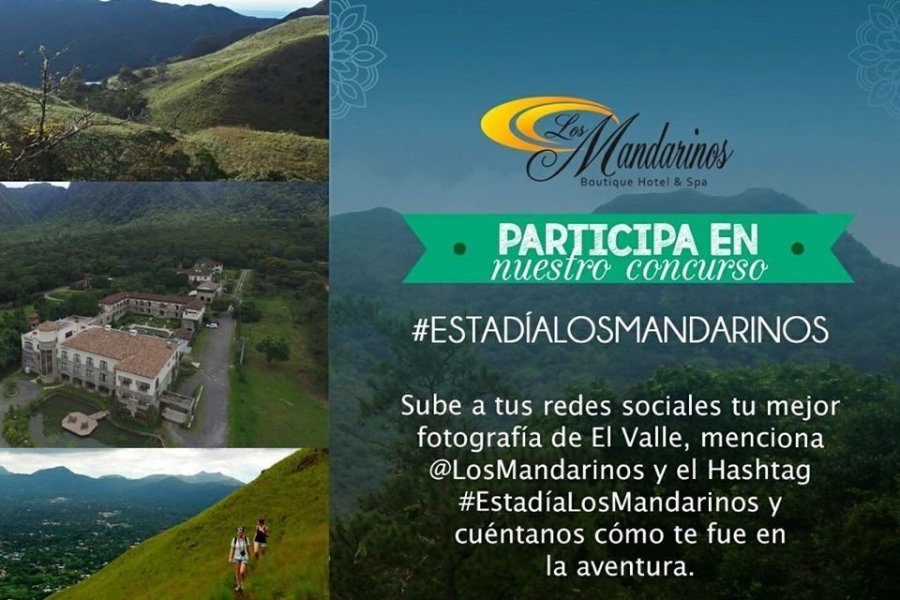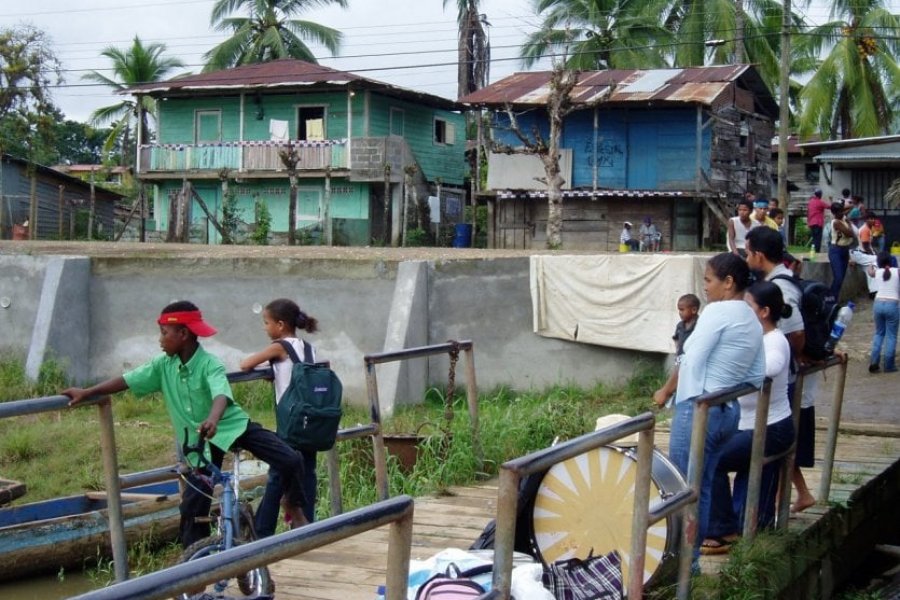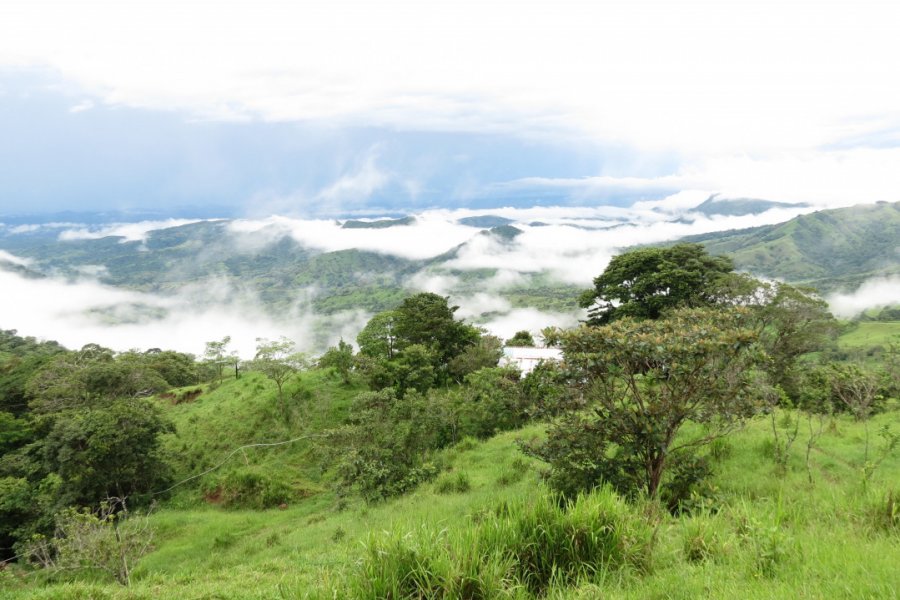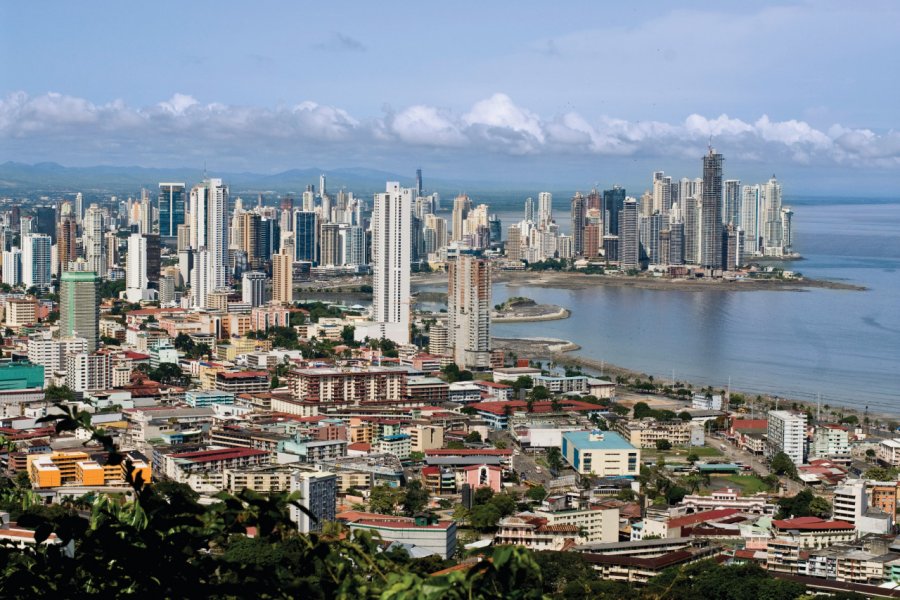Travel guide Panama
A trip to Panama is an immersion in a nature with an incredible biodiversity, almost as diverse as that of neighboring Costa Rica . This Central American isthmus is indeed rich in varied fauna and contrasting landscapes with coral archipelagos, white sand beaches bordering the Caribbean Sea, a real jungle, tropical forests, mountain ranges... A unique destination! And it is enough to leaf through a tourist guide on Panama to realize it. A bridge between the American western culture and the Latin American way of life, Panama is also its famous canal of course and a mosaic of cultures and atmospheres. Take the time to visit Panama City, a bustling and modern capital, before finding yourself on a dugout canoe to travel up a river to an Amerindian village! Then explore the mountainous region of Chiriqui before reaching the paradisiacal beaches of Bocas del Toro or the archipelago of San Blas...
What to see, what to do Panama?
-
Book an activity
-
Customized travel
- The most beautiful cities Panama
When to go Panama ?
When to go to Panama? The high tourist season extends from November to early April, including the Panamanian summer school vacations. This is the dry season, with little rain, sun and wind. The very high season occurs during the November bridges for the national holidays(fiestas patrias), the week between Christmas and New Year's Day, the carnival in February and Holy Week. Hotel rates increase significantly and it is advisable to book your room well in advance.
In the very low season (May-June) you may find that hotels and restaurants are closed, as many owners take their vacations at this time, before the arrival of European tourists in July-August. During the high season, the beaches fill up quickly, but rest assured that there is no shortage of quiet spots! During this Panamanian summer, the days are slightly longer. On the one hand, the sun makes it easier to move around on the less muddy tracks (don't worry, the roads are generally very good in Panama), on the other hand, the wind sometimes makes it difficult to move around by sea in small boats. From April onwards, the most touristic places are less crowded and it is the best time to go to Panama for a vacation far from the crowd. The rains are heavy but they last only a few hours. They create a special atmosphere, with even greener landscapes, a beautiful inky sky and impressive thunderclaps!
Suggested addresses Panama
Travel Panama
-
Find a hotel
-
Car Rental
-
International e-SIM package
-
Find a local agency
Le Panamá offre mille et une possibilités de séjour malgré sa taille modeste. Tout dépendra du temps dont on dispose et des activités que l’on souhaite pratiquer : surf, rando, farniente, visites culturelles, rencontres avec des communautés amérindiennes... Des routes plutôt bonnes, un réseau de bus performant et des vols internes rendent les déplacements plutôt faciles. L'idéal est de combiner les modes de transport, pour un voyage optimal. Les avionnettes permettent de relier la capitale aux aérodromes les plus isolés en moins d’une heure, tandis que les lanchas ou pirogues motorisées assurent le relais vers les îles. La location d'une voiture – robuste si l'on veut sortir des grands axes – est pratique pour découvrir plus en profondeur les différentes provinces et accéder à certains lodges isolés. Seul le Darién présente des difficultés d'accès au-delà de la route panaméricaine et reste peu accessible sans guide.
Find unique Stay Offers with our Partners
How to go Panama
How to go alone
Panama is a safe country, probably the safest in Central America. But as everywhere, tourists can be a prime target and it is advisable to respect a few basic rules: do not provoke potential thieves (diamond necklace or SLR camera around the neck in popular neighborhoods, wallet in the back pocket of your pants, backpack left unattended on a deserted beach, etc.) and beware of pickpockets in the crowd.
How to go on a tour
You can have a good overview of Panama by taking an 8 day tour. We will visit its famous canal of course but also its paradisiacal islands and its white sand beaches. We can also go to meet indigenous tribes like the Kunas in the San Blas islands, just to be like Robinson Crusoe.
How to get around
Domestic flights serve the country well as does the long distance bus network. The motor boat(lancha or panga) more or less powerful or the wooden dugout(bote) are often the only means of transport in the archipelagos and in the middle of the jungle in the absence of track or road. The crossings are very emotional! However, make sure that there are enough life jackets in the boat.
Featured articles Panama
Discover Panama
Few people can place Panama precisely on a planisphere. Yet this narrow strip of land, usually limited to its canal, has played a major role in the history of mankind. A territory that attracted the interest of the great European powers ever since they discovered the Pacific Ocean here in 1513. The isthmus became a gateway to the riches of the New World. It has retained its vocation as a land of transit right up to the present day, with gigantic ships using the legendary Panama Canal. But behind this technological prowess lies a truly sovereign country, with a mixed-race population no less proud of its traditions and idyllic landscapes. The following pages provide information on the country's flora and fauna, key moments in its history, local cuisine and music... all of which will enable you to get to know the Panamanian people in greater depth.
Pictures and images Panama
The 12 keywords Panama
1. Aire acondicionado
Air-conditioning is present in most public places in town, and while it's certainly appreciable in these hot weather conditions, it's all too often set (or not set) to maximum. So don't forget your sweater before a movie or a long trip on one of these "refrigerated" buses(nevera), as some are nicknamed!
2. Carnival
A much-anticipated event, Carnival is celebrated with the greatest fervor. Four days where everything comes to a standstill (vacations are imposed), except the binge! Parades, queen elections, hosing down the crowds... You can quench your thirst with beer or seco... The most popular and craziest carnival is Las Tablas, on the Azuero peninsula.
3. Chino
In the mid-19th century, a large Chinese community arrived for the construction of the railroad line linking Panamá and Colón. Today, their descendants run most of the laundries, popular restaurants and, above all, grocery stores - over 99% of them! In fact, el chino means "the grocery store" in everyday language.
4. Diablos rojos

With their colorful graffiti, their backfiring exhaust pipes and their mega horns, the "red devils" are the law in the capital! Don't venture to cross the street if you see one coming from afar! Their name would come from the nickname given to some national guardsmen who wore a red beret under the dictatorship of Noriega..
5. Gecko

This small lizard of less than 5 cm is frequent in Panama. If you don't see it, you will surely hear it at night in your hotel room. It hides in all the corners and emits a small noise (toc toc) which will accompany you throughout your trip. Don't be afraid of it, it only attacks small insects, such as mosquitoes.
6. Geisha

Panama's most famous coffee is the most expensive in the world. Over $800 a pound for the best beans! The volcanic highlands of Chiriqui produce an arabica with unique aromas. But it's not so sure you'll appreciate this famous Geisha, which is more suited to tea lovers, since its taste is very similar.
7. Mall
These gigantic shopping malls are all the rage in Panama. Consumer paradises that you either love or hate. Modern and air-conditioned, they attract many Latin American tourists for their brand names and low prices, and often represent an oasis of coolness for the locals in the midst of the tropical humidity.
8. Mola

The country's most emblematic piece of handicraft, immediately evocative of the world of San Blas and the Gunas Indians. The mola that covers the blouses of indigenous women is made up of several layers of colored fabric interwoven using the appliqué-inverted technique to form original patterns. Genuine works of art!
9. Ships
Through its flag of convenience, Panama has the largest merchant marine fleet in the world! Since 1925, any ship can apply for a Panamanian registration and thus benefit from a very flexible social and maritime legislation, tax exemptions and an anonymity dear to the unscrupulous shipowners...
10. Panama hat
The hat commonly called "panama" is not native to the isthmus, but to Ecuador. The name given to the Ecuadorian hat comes from the expression "panama hat" used by the Americans to designate the hats worn at the beginning of the last century by the workers and engineers of the canal, many of whom were from Ecuador.
11. Panamax
Name given to ships that were allowed to use the Panama Canal before its enlargement. The "post-panamax" or "neo-panamax" - with up to 14,000 containers - that pass through the new Agua Clara and Cocoli locks sometimes have only a few centimetres of clearance on each side when they pass through the locks.
12. Típico
This term, which encompasses a way of life, cuisine, music, dance and traditional costumes, refers to a great deal of regional pride and authenticity. The carnival and several festivals pay tribute to this "typically" Panamanian folklore, originating from the central provinces commonly known as El Interior.
You are from here, if...
You're timed tothe hora panameña and never arrive on time. You may even forget to arrive. In any case, it's always del tranque's fault. Similarly, you're patient when waiting for an appointment and know that ahorita - literally "in a little while" - is a moment that tends to drag on, or never happen.
You don't enter banks or government officesin shorts. You don't drive bare-chested, and only go bare-chested on the beach; as a woman, you avoid toplessness.
You ask the cab where it's going. You know that if you give him an address, he's likely to reply abruptly No voy ("I'm not going there").
Youhead for the beach or the river, but don't forget your cooler loaded with beers.
During Carnival, you shout ¡ agua agua! as a tanker loaded with the liquid of life approaches.
You don't blush when a waiter or waitress calls you mi corazón or mi amorrrr!

































